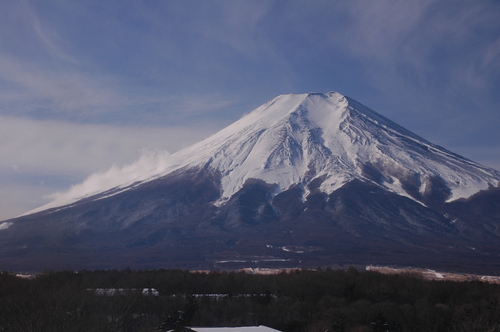Frequency of quakes around Tokyo, before and after the Tohoku quake. Data from Todai report.
Small earthquakes occur more frequent[ly] than large ones. Smaller the earthquake is, the more likely [it is] to occur. This is called the "Gutenberg-Richter's low". For example, in Japan it is known that magnitude (M) 3 earthquake occurs 10,000 times per year (i.e. once in an hour); M4 earthquake, 1000 times per year (i.e. 3times in a day); M5, 100 times per year (i.e. once in 3days); M6, 10 times per year (i.e. once a month).
The government's official prediction, which uses a different basis for calculation, is that The Big One will hit with a 70% chance in the next 30 years. That is easy enough to ignore - 30 years is a long time, after all. But this new prediction from the university scientists make it sound like as likely as a weather forecast. 70% chance of rain? You'd carry an umbrella.
Friends I've surveyed about this admit their concern, but aren't planning to leave or do much at all. I think my main action will be to update my emergency kit with some items we learned were in short supply after March, and to keep to a schedule of restocking it so that food stores are always fresh.
Good morning, Japan. Mt Fuji area quake shakes us all awake.
So with all this on my mind, a series of earthquakes this weekend were more jarring than usual. We felt three moderately rattlers on Saturday morning and Sunday afternoon. None bigger than M 5.5, but all with an epicenter near Mt. Fuji. There were quite a few we didn't feel originating form there, too, and some along the coast in Kyushu and Okinawa.
This concerns me in two ways. First of all, this weekend's Fuji quakes were just about at the epicenter of the 1923 Great Kanto Earthquake - the previous Big One - that destroyed a lot of Tokyo in collapses and fire. But more important than a historical tie, Mt Fuji isn't on the Pacific Plate, where the March 11 earthquake happened. It's at the boundary of two plates: the Philippine and Eurasian. I'm not a geologist, but it seems logical that when one area slips violently, as the Pacific Plate did last year, adjacent plates are going to build up stress until they shift, too. Until recently, most of the quakes have been on the Pacific Plate with some along the Eurasian Plate (up in Niigata, for example) and just a rare few on the Philippine Plate. Looks like things may be changing now.
Beautiful portrait of Fuji-san this morning. Thanks to a livecam at http://www.fujigoko.tv/
Which brings me to my second concern, Mt Fuji itself. She's due for an eruption. The last time was December 1707, a few months after a huge earthquake and tsunami. She has erupted in concert with other large earthquakes, including once in 870, after a really huge quake in northern Japan in 869. So could we be lining up for a volcanic eruption along with the Big One?
I'd better include some dust masks in the emergency kit.





Recent Comments